Java substring方法實(shí)現(xiàn)原理解析
substring實(shí)現(xiàn)原理
String是Java中一個(gè)比較基礎(chǔ)的類(lèi),每一個(gè)開(kāi)發(fā)人員都會(huì)經(jīng)常接觸到。而且,String也是面試中經(jīng)常會(huì)考的知識(shí)點(diǎn)。String有很多方法,有些方法比較常用,有些方法不太常用。今天要介紹的subString就是一個(gè)比較常用的方法,而且圍繞subString也有很多面試題。
substring(int beginIndex, int endIndex)方法在不同版本的JDK中的實(shí)現(xiàn)是不同的。了解他們的區(qū)別可以幫助你更好的使用他。為簡(jiǎn)單起見(jiàn),后文中用substring()代表substring(int beginIndex, int endIndex)方法。
substring()的作用
substring(int beginIndex, int endIndex)方法截取字符串并返回其[beginIndex,endIndex-1]范圍內(nèi)的內(nèi)容。s
String x = 'abcdef';x = x.substring(1,3);System.out.println(x);
輸出內(nèi)容:
bc
調(diào)用substring時(shí)發(fā)生了什么?
你可能知道,因?yàn)閤是不可變的,當(dāng)使用x.substring(1,3)對(duì)x賦值的時(shí)候,它會(huì)指向一個(gè)全新的字符串:
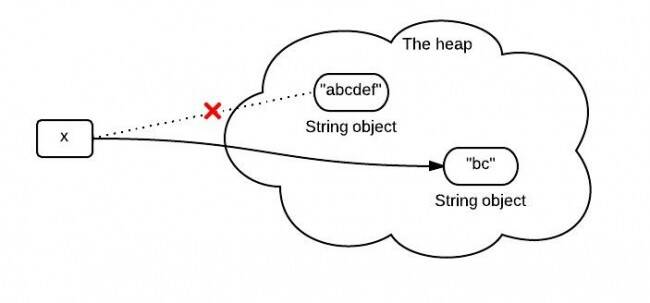
然而,這個(gè)圖不是完全正確的表示堆中發(fā)生的事情。因?yàn)樵趈dk6 和 jdk7中調(diào)用substring時(shí)發(fā)生的事情并不一樣。
JDK 6中的subString
tring是通過(guò)字符數(shù)組實(shí)現(xiàn)的。在jdk 6 中,String類(lèi)包含三個(gè)成員變量:char value[], int offset,int count,他們分別用來(lái):存儲(chǔ)真正的字符數(shù)組、存儲(chǔ)數(shù)組的第一個(gè)位置索引、存儲(chǔ)字符串中包含的字符個(gè)數(shù)。
當(dāng)調(diào)用substring方法的時(shí)候,會(huì)創(chuàng)建一個(gè)新的string對(duì)象,但是這個(gè)string的值仍然指向堆中的同一個(gè)字符數(shù)組。這兩個(gè)對(duì)象中只有count和offset 的值是不同的。
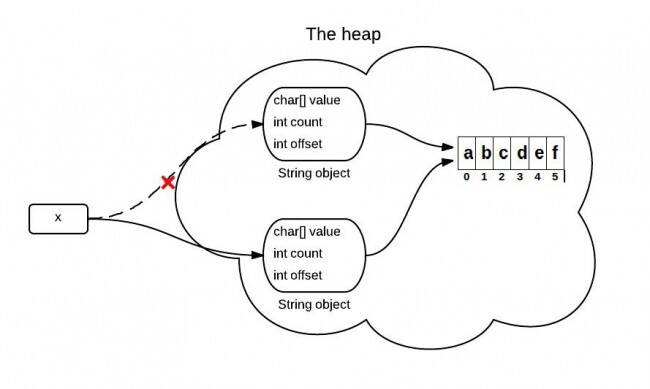
源碼
//JDK 6String(int offset, int count, char value[]) { this.value = value; this.offset = offset; this.count = count;}public String substring(int beginIndex, int endIndex) { //check boundary return new String(offset + beginIndex, endIndex - beginIndex, value);}
存在的問(wèn)題
如果有一個(gè)很長(zhǎng)的字符串,但是你只需要使用很短的一段,于是你使用substring進(jìn)行切割,但是由于你實(shí)際上引用了整個(gè)字符串,這個(gè)很長(zhǎng)的字符串無(wú)法被回收。往小了說(shuō),造成了存儲(chǔ)空間的浪費(fèi),往大了說(shuō),可能造成內(nèi)存泄漏。這個(gè)問(wèn)題已經(jīng)被官方記錄在Java Bug Database里面了:
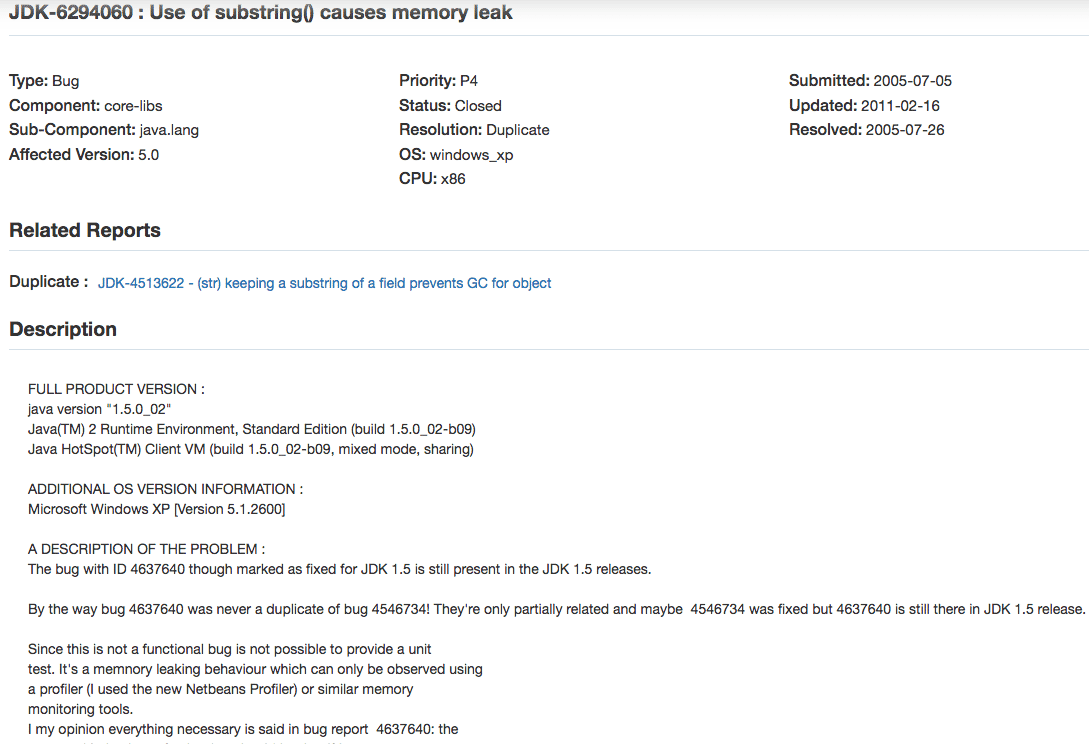
相應(yīng)的解決辦法:
s1 = s1.substring(x,y) + '';
JDK 7 中的substring
上述問(wèn)題在JDK 7中得到了解決。JDK 7中,substring方法會(huì)在堆中創(chuàng)建一個(gè)新的數(shù)組。
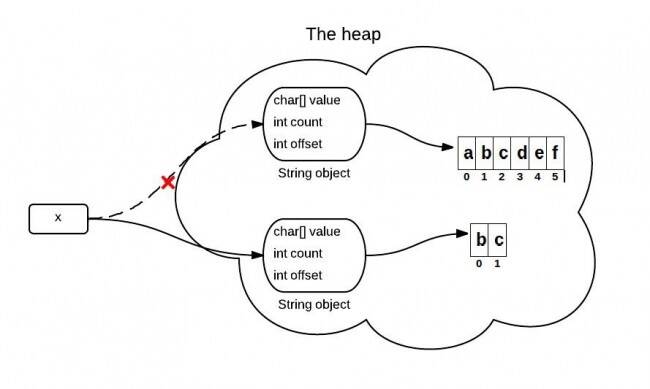
源碼
//JDK 7 /** * Allocates a new {@code String} that contains characters from a subarray * of the character array argument. The {@code offset} argument is the * index of the first character of the subarray and the {@code count} * argument specifies the length of the subarray. The contents of the * subarray are copied; subsequent modification of the character array does * not affect the newly created string. * * @param value Array that is the source of characters * @param offset The initial offset * @param count The length * @throws IndexOutOfBoundsException If the {@code offset} and {@code count} arguments index * characters outside the bounds of the {@code value} array */ public String(char value[], int offset, int count) { //check boundary this.value = Arrays.copyOfRange(value, offset, offset + count); } /** * Returns a string that is a substring of this string. The * substring begins at the specified {@code beginIndex} and * extends to the character at index {@code endIndex - 1}. * Thus the length of the substring is {@code endIndex-beginIndex}. * <p> * Examples: * <blockquote><pre> * 'hamburger'.substring(4, 8) returns 'urge' * 'smiles'.substring(1, 5) returns 'mile' * </pre></blockquote> * * @param beginIndex the beginning index, inclusive. * @param endIndex the ending index, exclusive. * @return the specified substring. * @throws IndexOutOfBoundsException if the * {@code beginIndex} is negative, or * {@code endIndex} is larger than the length of * this {@code String} object, or * {@code beginIndex} is larger than * {@code endIndex}. */ public String substring(int beginIndex, int endIndex) { //check boundary int subLen = endIndex - beginIndex; return ((beginIndex == 0) && (endIndex == value.length)) ?this :new String(value, beginIndex, subLen); }
以上就是本文的全部?jī)?nèi)容,希望對(duì)大家的學(xué)習(xí)有所幫助,也希望大家多多支持好吧啦網(wǎng)。
相關(guān)文章:
1. python實(shí)現(xiàn)讀取類(lèi)別頻數(shù)數(shù)據(jù)畫(huà)水平條形圖案例2. python中PyQuery庫(kù)用法分享3. python操作數(shù)據(jù)庫(kù)獲取結(jié)果之fetchone和fetchall的區(qū)別說(shuō)明4. 關(guān)于HTML5的img標(biāo)簽5. PHP獲取時(shí)間戳等相關(guān)函數(shù)匯總6. python 爬取嗶哩嗶哩up主信息和投稿視頻7. ASP.NET MVC前臺(tái)動(dòng)態(tài)添加文本框并在后臺(tái)使用FormCollection接收值8. CSS3實(shí)現(xiàn)動(dòng)態(tài)翻牌效果 仿百度貼吧3D翻牌一次動(dòng)畫(huà)特效9. php使用正則驗(yàn)證密碼字段的復(fù)雜強(qiáng)度原理詳細(xì)講解 原創(chuàng)10. JSP+Servlet實(shí)現(xiàn)文件上傳到服務(wù)器功能
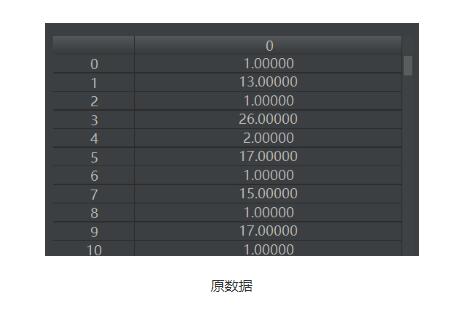
 網(wǎng)公網(wǎng)安備
網(wǎng)公網(wǎng)安備